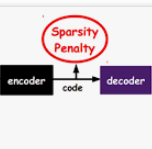Bundle adjustment (BA) is the standard way to optimise camera poses and to produce sparse representations of a scene. However, as the number of camera poses and features grows, refinement through bundle adjustment becomes inefficient. Inspired by global motion averaging methods, we propose a new bundle adjustment objective which does not rely on image features' reprojection errors yet maintains precision on par with classical BA. Our method averages over relative motions while implicitly incorporating the contribution of the structure in the adjustment. To that end, we weight the objective function by local hessian matrices - a by-product of local bundle adjustments performed on relative motions (e.g., pairs or triplets) during the pose initialisation step. Such hessians are extremely rich as they encapsulate both the features' random errors and the geometric configuration between the cameras. These pieces of information propagated to the global frame help to guide the final optimisation in a more rigorous way. We argue that this approach is an upgraded version of the motion averaging approach and demonstrate its effectiveness on both photogrammetric datasets and computer vision benchmarks.
翻译:---
束调整(BA)是优化相机姿态并生成场景稀疏表示的标准方法。然而,随着相机姿态和特征数量的增加,通过束调整进行精炼变得低效。受全局运动平均方法的启发,我们提出了一种新的束调整目标,它不依赖于图像特征的重投影误差,同时保持与经典BA相当的精度。我们的方法对相对运动进行平均,同时隐含地纳入了结构在调整中的贡献。为此,我们通过局部束调整(例如成对或三元组)执行的相对运动来获得局部黑森林矩阵的权重。这些黑森林矩阵极其丰富,因为它们包含特征的随机误差和相机之间的几何配置。这些信息传播到全局框架,有助于更加严格地指导最终优化。我们认为这种方法是运动平均方法的升级版本,并展示了它在摄影测量数据集和计算机视觉基准测试中的有效性。

